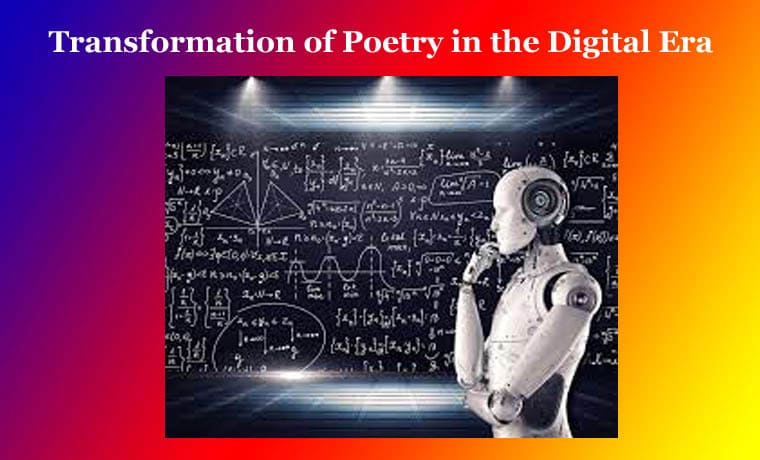Transformation of Poetry in the Digital Era
The digital era has ushered in a transformative shift in the way poetry is created, shared, and consumed. Online platforms such as social media, blogs, and poetry websites provide poets with unprecedented opportunities to reach global audiences instantaneously. Poets like Rupi Kaur and Atticus, known for their success on Instagram, have harnessed the power of digital spaces to share their verses, enabling a direct and immediate connection with readers around the world.
Transformation of Poetry in the Digital Era – Chief Features
Micro-Poetry
The constraints of digital platforms, particularly those with character limits like Twitter, have given rise to the emergence of micro-poetry. Poets are now challenged to distill their thoughts, emotions, and observations into concise and impactful verses. Writers like Twitter’s “So You Want To Be A Writer” (@AdviceToWriters) have mastered the art of crafting profound and thought-provoking poetry within the limitations of a tweet, demonstrating that brevity can enhance the poignancy of poetic expression.
Multimedia Integration
In the digital age, poetry has transcended traditional textual boundaries, incorporating visual and auditory elements for a richer artistic experience. Platforms like YouTube and Instagram allow poets to combine their verses with visuals, spoken word performances, or ambient music. This multimedia approach enhances the emotional resonance of the poetry, offering audiences a more immersive and dynamic encounter with the written word. Poets like Sarah Kay and Phil Kaye, known for their spoken word performances, exemplify this fusion of poetry and multimedia.
Interactive Poetry
Digital platforms enable poets to engage with audiences interactively, breaking down the traditional barriers between creators and readers. Platforms like Wattpad and interactive poetry websites encourage collaborative storytelling and audience participation. Poets like Lang Leav use social media to directly connect with their readership, fostering a sense of community and interactivity that was less feasible in the pre-digital era.
Global Collaborations
Digital platforms have facilitated global collaborations among poets, transcending geographic boundaries and cultural divides. Poets from different corners of the world can collaborate on projects, share perspectives, and create a more diverse and interconnected poetic landscape. Initiatives like the Global Poetry System bring together poets from various cultures to collaborate on cross-cultural poetic projects, showcasing the transformative power of digital connectivity in the world of poetry.
Digital Archives and Preservation
The digital era has revolutionized the archiving and preservation of poetry, ensuring that works are not lost to time. Online databases, digital libraries, and poetry archives provide a lasting record of poetic contributions. Projects like the Poetry Foundation’s digital archive make classic and contemporary poetry accessible to a global audience, contributing to the democratization of literary access and knowledge.
Conclusion:
In the digital era, poetry undergoes a profound transformation, embracing new modes of expression, engaging with diverse audiences, and leveraging technology to expand its reach. The intersection of poetry and the digital realm opens up exciting possibilities for innovation, collaboration, and the continued evolution of this timeless art form.
You May Like:












